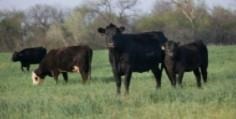By John Wallace and Dwight Lingenfelter
Glyphosate-resistant marestail (Conyza canadensis; 'horseweed') continues to become more widespread across Pennsylvania. Controlling marestail in the fall is a critical first step for effective management of this species in no-till production systems.

Emergence patterns
Marestail emergence patterns make management challenging. We typically see marestail emerging from late-summer (mid-August) into fall (October), as well as in the spring. The first flush of marestail often coincides with the onset of more frequent precipitation in late-August and early September. Marestail that emerges in late summer can result in control failures of pre-plant burndown products the following spring. Our field trial research consistently shows that efficacy of pre-plant burndown products (2,4-D ester, dicamba, Sharpen) is reduced when targeting large rosettes (> 3 in diameter) or bolting marestail plants, which are likely those individuals that emerged in late-summer and early fall.
This year, consider scouting fields for fall-emerged marestail populations after crop harvest and design a plan that includes the fall management tactics listed below. Fields with heavy marestail infestations should be prioritized for scouting, but adjacent fields should also be scouted given the potential for long-distance wind dispersal of marestail seed.
Fall burndown programs
We suggest using 2,4-D LVE (0.5 lb. ae/ac) as the base product for fall burndown programs, which can provide good control of small marestail seedlings and rosettes. Other products such as dicamba (0.25 lb. ae/ac) or glyphosate can be included to broaden the weed control spectrum of winter annuals and perennial species. Applying these systemic herbicides during a stretch of multiple days where daytime temperatures exceed 55 F and nighttime temperatures exceed 40 F will improve control. If late crop harvest prevents timely fall burndown applications, these same products and can be used in early spring (April) to effectively control fall-emerged marestail populations. At this timing, product rates and application timing relative to planting must be considered, which we will address in a spring newsletter article.
Fall cover crops
Our research has shown that a competitive cover crop can reduce fall- and spring- emerged marestail flushes by over 75% and has the additional benefit of suppressing growth rates, which potentially increases the efficacy of pre-plant burndown products in the spring by keeping plants small. Establishing good fall ground cover and maximizing biomass production should be the cover crop management goal for marestail suppression.
Cereal rye has proven to be the workhorse for optimizing weed suppression in the fall. Fall growing degree days (GDDs) and residual soil fertility are the primary drivers of cereal rye biomass production so prioritizing establishment soon after crop harvest will yield greater weed suppression benefits. Our field research suggests that cereal rye seeding rates have little impact on weed suppression potential when established in early October. With sufficient fall GDDs, lower rates (45 lb./ac) can produce similar ground cover and biomass due to increased tillering.
Integrating cover crop and herbicide control tactics
Ideally, cover crop seeding would be preceded by a burndown herbicide application to start clean. However, given labor constraints and cost considerations around crop harvest, cover crop seeding may be prioritized to maximize fall GDDs and conservation benefits. If marestail populations were present at the time of cover crop seeding, marestail can be selectively controlled in late fall or early spring using either 2,4-D LVE, dicamba, or 2,4-D + dicamba in established stands (> 2 leaf stage) of cereal rye or other winter cereals (wheat, triticale). Cover crop mixtures that include legume or brassica species prevent the use of these products for selective marestail control after cover crop establishment.
Choosing a cost-effective approach
Fall burndown applications of emerged marestail populations or use of fall-seeded cover crops will not eliminate the need for including effective marestail products in pre-plant burndown applications in the spring. The need for additional inputs in the spring may make fall management of marestail difficult to justify. But when analyzing the costs and benefits, it is important to consider that fall management tactics create greater management flexibility for making timely and effective pre-plant burndown applications in spring. Timely herbicide applications for marestail control are likely to generate future cost-savings from crop yield protection and reduced herbicide input costs in the subsequent growing season and future years.
Source : psu.edu